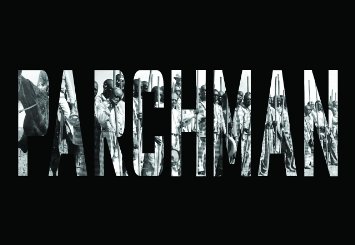
Parchman Farm: Photographs and Field Recordings, 1947-1959
by Various Artists
Dust-to-Digital
The Mississippi State Penitentiary at Parchman was a brutal segregated men’s prison which looked like slavery under a different name, where convicts were used for labor in cotton fields with an emphasis on profit rather than rehabilitation. It was a grim life, with some convicts resorting to self-mutilation to escape the work. It also produced some startlingly beautiful music from the convicts, who sang to keep to keep everyone working together, to time the axes or saws, or simply to pass the time.
Ethnographers John Lomax and Alan Lomax recorded a series of these songs in 1947, 1948, and 1959. The prison worksongs were dying out by the time the Lomaxes recorded their final sessions, only practiced by the old timers. In a few years, they would be completely forgotten, if not for the Lomax recordings.
Now Dust-to-Digital has released a simply astounding two disc set of these recordings with an accompanying book.
For the most part, the songs are started and kept on track by a leader, accompanied by a group of prisoners. Sometimes reminiscent of Sacred Harp singing, the vocals keep a main rhythm with vocalists weaving in and out, all to the accompaniment of a group of axes or hoes. Listening to these songs today, the listener is taken back further than the mid twentieth century, as these songs probably didn’t change much since the days of slavery.
The songs focus on a variety of subjects; hard times and women are naturally frequently represented, as in the verse, “Ain’t but one thing I done wrong, Stayed in Mississippi just a day too long,” from the song “Rosie.” Folk heroes John Henry and Stackalee also make appearances, with “John Henry” getting a slower, dirge-like version with a group, and a haunting solo performance of “Stackalee” by W.D. “Bama” Stewart. There are several solo performances, and some prisoners perform with harmonica or guitar. These are generally the later recordings, and you can hear more modern influences creeping in.
The accompanying book includes essays, reproductions of documents such as tape boxes, original typewritten track listings, and requisition papers. It also reproduces a wealth of photographs. A picture of the prisoners assembled in a cotton field with a white guard on horseback could have been taken in the pre-Civil War days, but the more relaxed photos on visiting day show a different side to the prison system, which by that time had started embracing reform, albeit slowly. Here prisoners are wearing button-down shirts over their prison stripes and are interacting with wives, girlfriends, and children, trying to reclaim parts of a normal life after a week of non-ending drudgery.
You can hear the roots and influences of a large portion of twentieth century music here, and it sounds like something sacred and ancient, with a lineage all the way back to Africa. Anyone interested in roots music, Americana, folk, or group harmony should definitely check this out.












